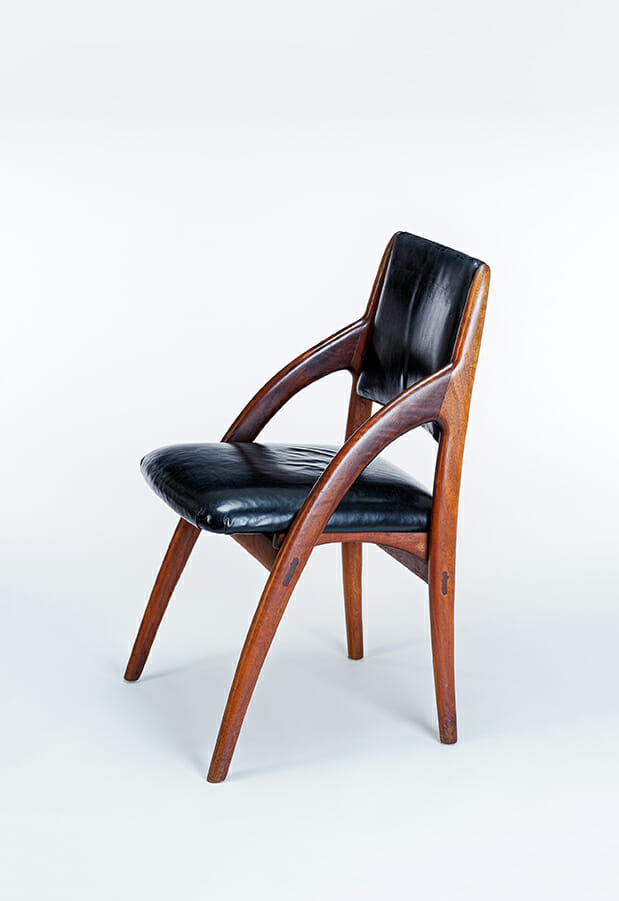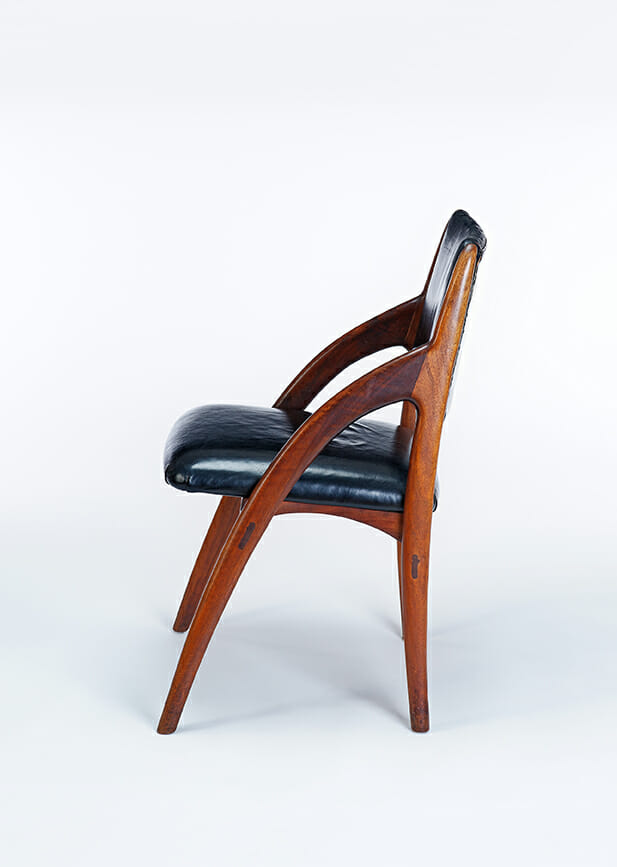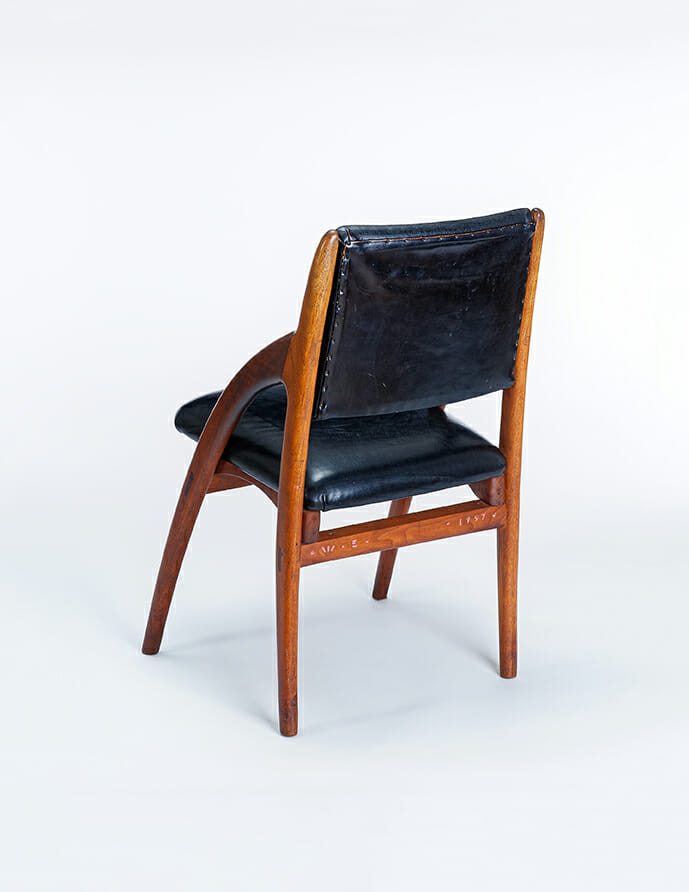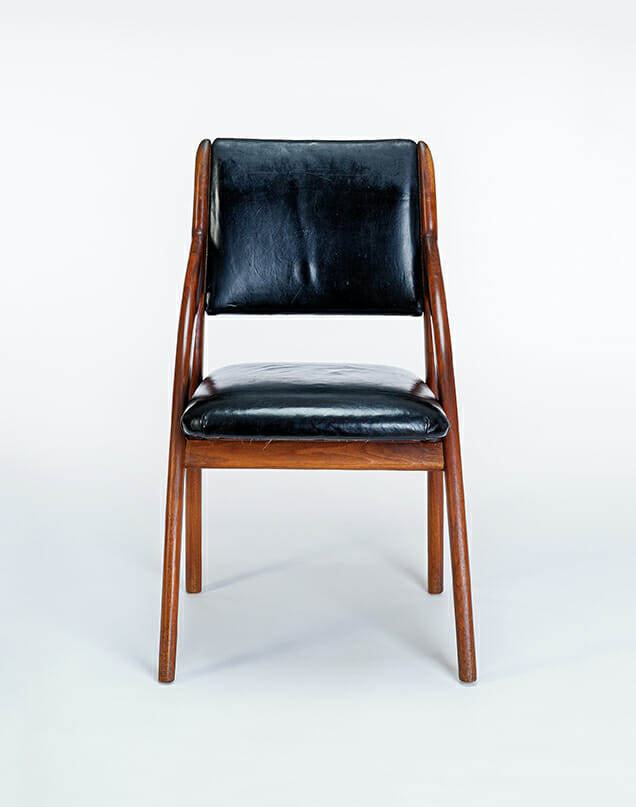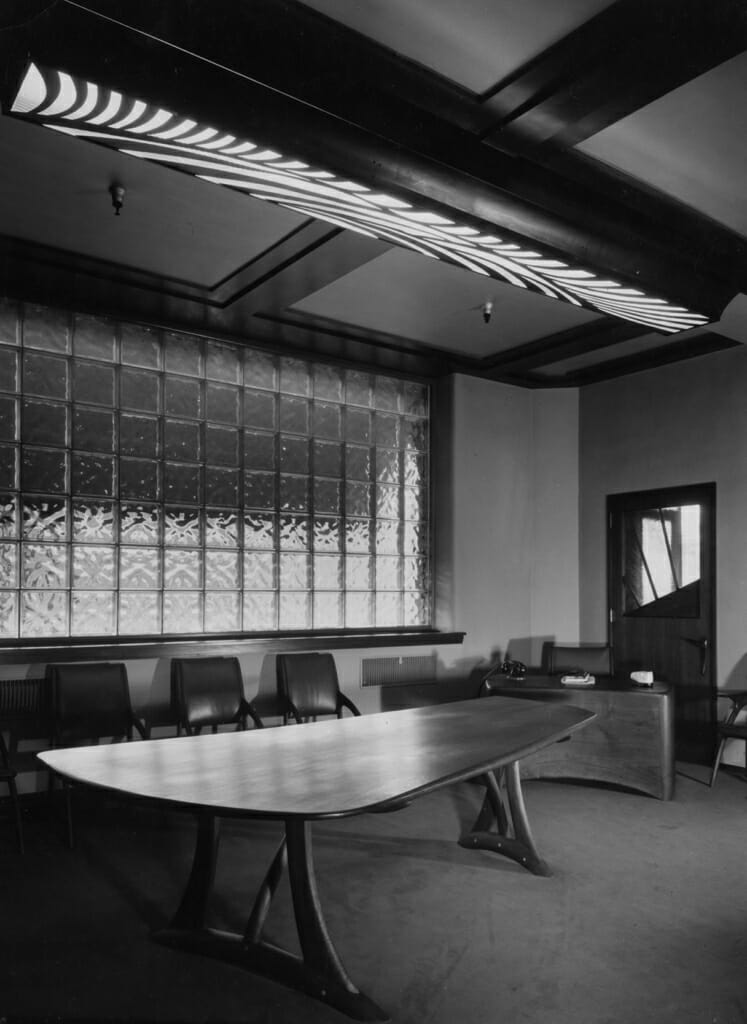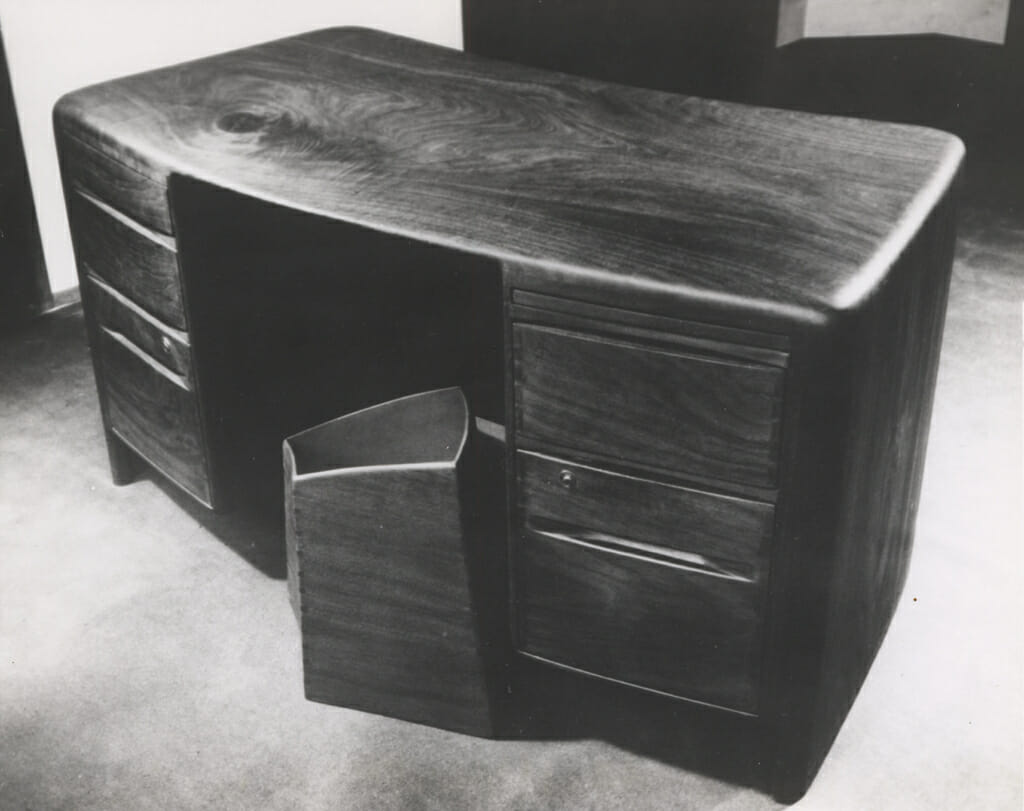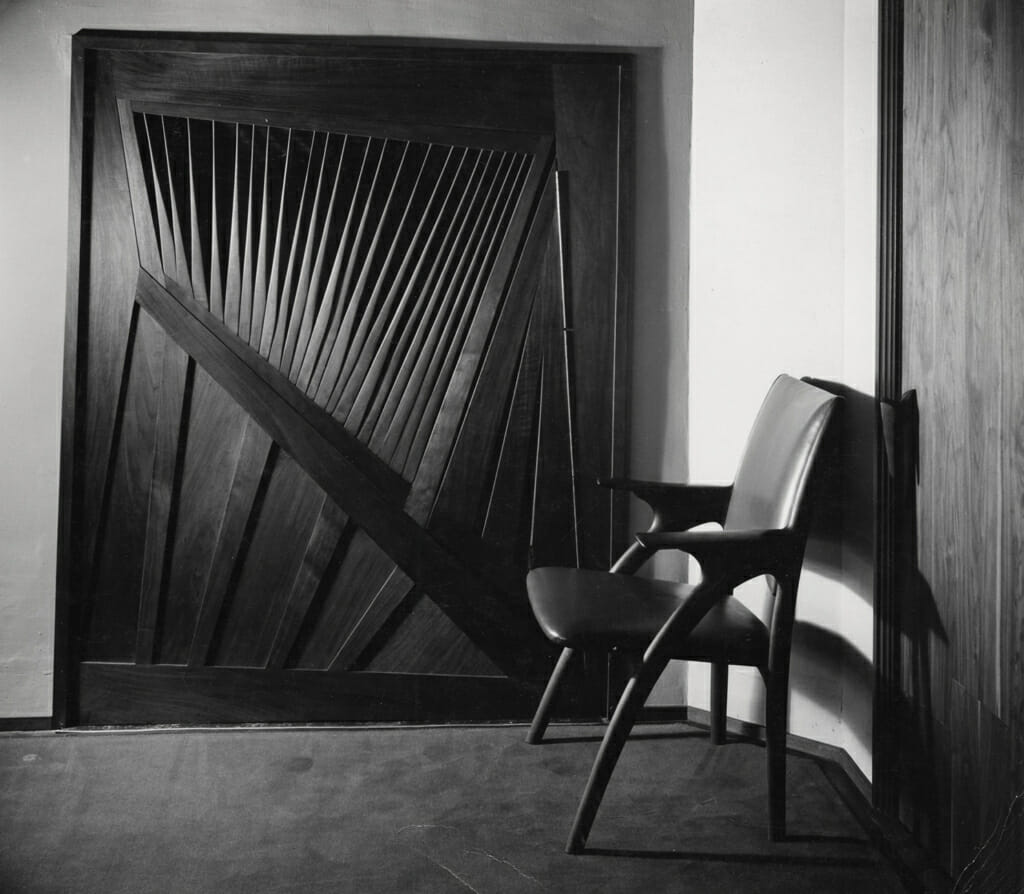S-K Chair
Wharton Esherick
1957
Walnut frame, black Naugahide upholstery
31.8 x 20 x 17.5 inches
Collection of the Wharton Esherick Museum
Images courtesy of Eoin O’Neill and Edward Quigley, ca. 1942-43, Wharton Esherick Museum Collection.
One of the great patrons of Esherick’s life was Helene Koerting Fischer, with whom he began collaborating in 1929. After her husband’s death in 1942, Fischer assumed the presidency of the Schutte-Koerting Company, a Philadelphia-based manufacturer for precision machine parts. Hoping to convey the forward thinking approach of the company under her dynamic leadership, Fischer quickly commissioned Esherick to design new boardroom furniture for the company, of which the S-K Chair is part. The suite included a desk, chair, and wastebasket for Fischer’s office, as well as a board table and chairs, entrance door, radiator grille, and overhead light. While the design of the S-K Chair is elegant in its simplicity, it was a substantial departure from traditional furniture design. The curved and elongated line that seamlessly moves from the arm into the leg seems to branch organically from the chair’s erect back. When Fischer sold her company in 1972, the boardroom furniture was donated to the Philadelphia Museum of Art — which even used them in their own boardroom for some time.
This version of the S-K Chair was produced over a decade after the original commission; while it is still constructed from walnut, this new model swaps the red leather upholstery of the original for black Naugahyde. The impact of the S-K Chair can be seen in the branched construction of other studio furniture makers, most notably Arthur Espenet Carpenter’s iconic Wishbone Chair.
Read more about Esherick’s relationship with Helene Fischer on WEM’s blog and read artist and researcher Mark Sfirri’s in-depth analysis of a desk made for Fischer in 1931.
See an original S-K Chair in the collection of the Philadelphia Museum of Art.

